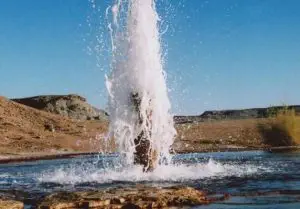 Study of natural-occurring 100,000 year-old CO2 reservoirs shows no significant corroding of ‘cap rock’, suggesting the greenhouse gas hasn’t leaked back out – one of the main concerns with greenhouse gas reduction proposal of carbon capture and storage.
Study of natural-occurring 100,000 year-old CO2 reservoirs shows no significant corroding of ‘cap rock’, suggesting the greenhouse gas hasn’t leaked back out – one of the main concerns with greenhouse gas reduction proposal of carbon capture and storage.
New research shows that natural accumulations of carbon dioxide (CO2) that have been trapped underground for around 100,000 years have not significantly corroded the rocks above, suggesting that storing CO2 in reservoirs deep underground is much safer and more predictable over long periods of time than previously thought.
These findings, published today in the journal Nature Communications, demonstrate the viability of a process called carbon capture and storage (CCS) as a solution to reducing carbon emissions from coal and gas-fired power stations, say researchers.
CCS involves capturing the carbon dioxide produced at power stations, compressing it, and pumping it into reservoirs in the rock more than a kilometre underground.
The CO2 must remain buried for at least 10,000 years to avoid the impacts on climate. One concern is that the dilute acid, formed when the stored CO2 dissolves in water present in the reservoir rocks, might corrode the rocks above and let the CO2 escape upwards.
By studying a natural reservoir in Utah, USA, where CO2 released from deeper formations has been trapped for around 100,000 years, a Cambridge-led research team has now shown that CO2 can be securely stored underground for far longer than the 10,000 years needed to avoid climatic impacts.
Leave a Reply